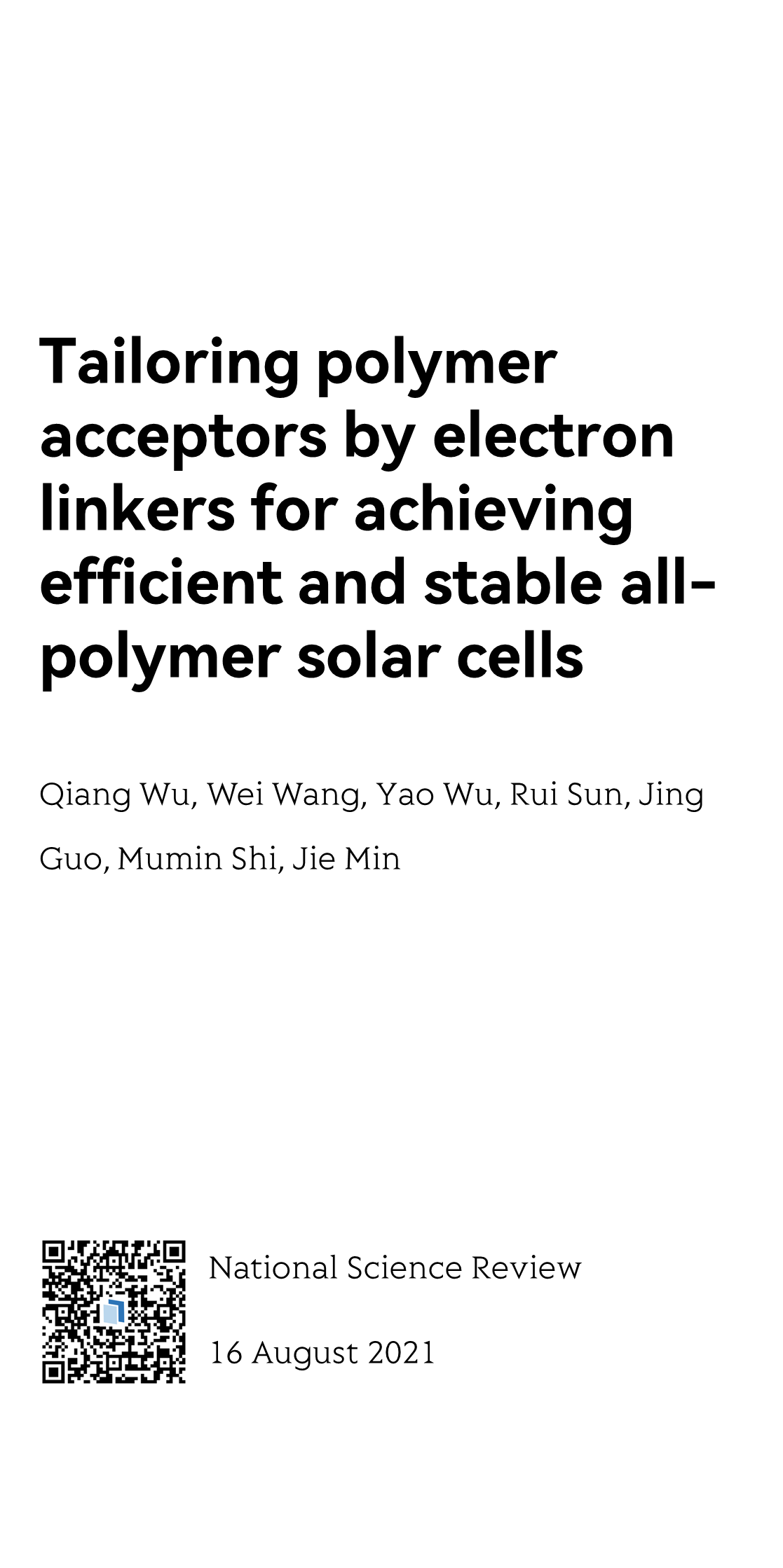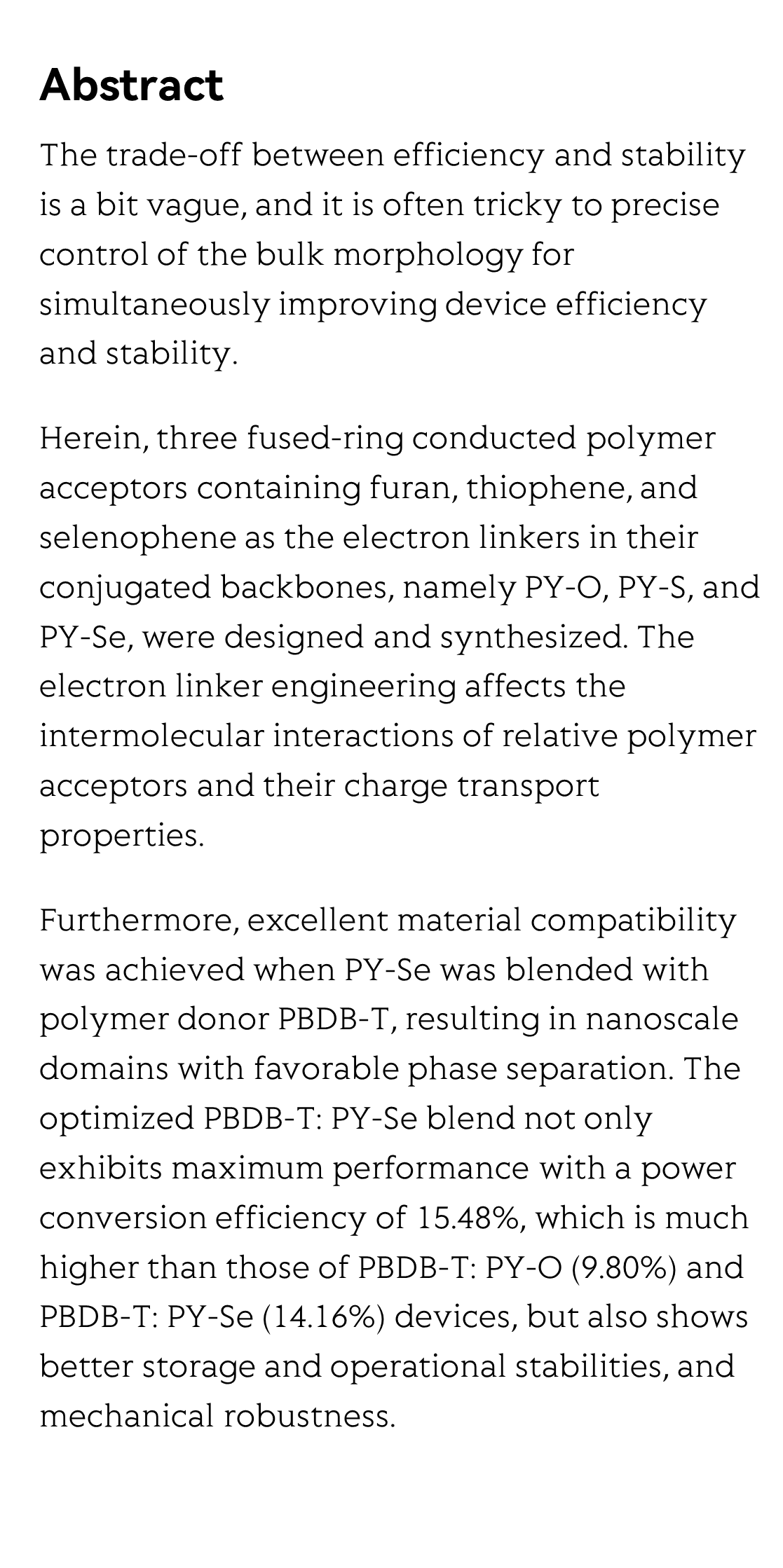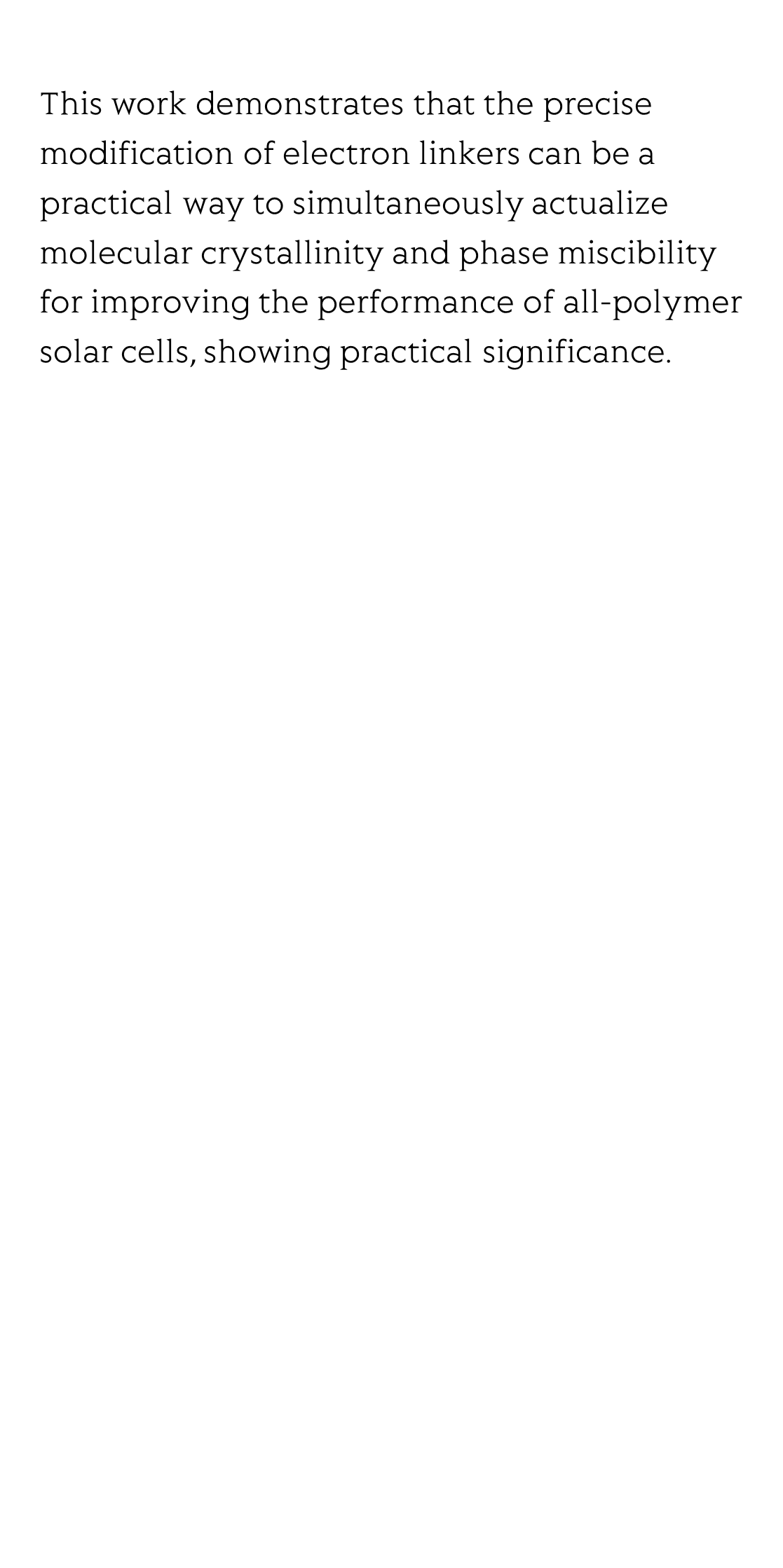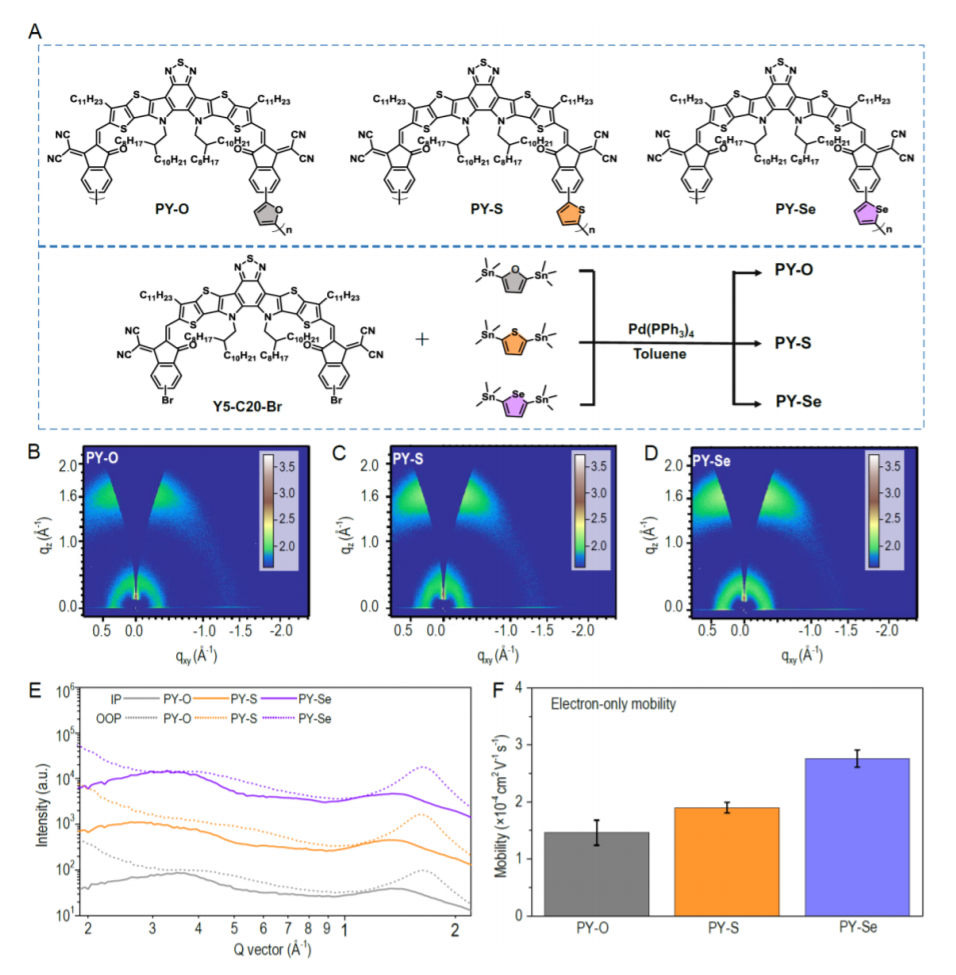(Peer-Reviewed) Tailoring polymer acceptors by electron linkers for achieving efficient and stable all-polymer solar cells
Qiang Wu 吴强 ¹, Wei Wang 王伟 ¹, Yao Wu 吴瑶 ¹, Rui Sun 孙瑞 ¹, Jing Guo 郭靖 ¹, Mumin Shi 石沐民 ¹, Jie Min 闵杰 ¹ ² ³
¹ The Institute for Advanced Studies, Wuhan University, Wuhan 430072, China; 武汉大学 高等研究院
² Key Laboratory of Materials Processing and Mold (Zhengzhou University), Ministry of Education, Zhengzhou 450002, China; 郑州大学 材料成型及模具技术教育部重点实验室
³ Institute of Polymer Optoelectronic Materials and Devices, State Key Laboratory of Luminescent Materials and Devices, South China University of Technology, Guangzhou 510640, China 华南理工大学 发光材料与器件国家重点实验室 高分子光电材料及器件研究所
National Science Review
, 2021-08-16
Abstract
The trade-off between efficiency and stability is a bit vague, and it is often tricky to precise control of the bulk morphology for simultaneously improving device efficiency and stability.
Herein, three fused-ring conducted polymer acceptors containing furan, thiophene, and selenophene as the electron linkers in their conjugated backbones, namely PY-O, PY-S, and PY-Se, were designed and synthesized. The electron linker engineering affects the intermolecular interactions of relative polymer acceptors and their charge transport properties.
Furthermore, excellent material compatibility was achieved when PY-Se was blended with polymer donor PBDB-T, resulting in nanoscale domains with favorable phase separation. The optimized PBDB-T: PY-Se blend not only exhibits maximum performance with a power conversion efficiency of 15.48%, which is much higher than those of PBDB-T: PY-O (9.80%) and PBDB-T: PY-Se (14.16%) devices, but also shows better storage and operational stabilities, and mechanical robustness.
This work demonstrates that the precise modification of electron linkers can be a practical way to simultaneously actualize molecular crystallinity and phase miscibility for improving the performance of all-polymer solar cells, showing practical significance.
Flicker minimization in power-saving displays enabled by measurement of difference in flexoelectric coefficients and displacement-current in positive dielectric anisotropy liquid crystals
Junho Jung, HaYoung Jung, GyuRi Choi, HanByeol Park, Sun-Mi Park, Ki-Sun Kwon, Heui-Seok Jin, Dong-Jin Lee, Hoon Jeong, JeongKi Park, Byeong Koo Kim, Seung Hee Lee, MinSu Kim
Opto-Electronic Advances
2025-09-25
Dual-frequency angular-multiplexed fringe projection profilometry with deep learning: breaking hardware limits for ultra-high-speed 3D imaging
Wenwu Chen, Yifan Liu, Shijie Feng, Wei Yin, Jiaming Qian, Yixuan Li, Hang Zhang, Maciej Trusiak, Malgorzata Kujawinska, Qian Chen, Chao Zuo
Opto-Electronic Advances
2025-09-25







